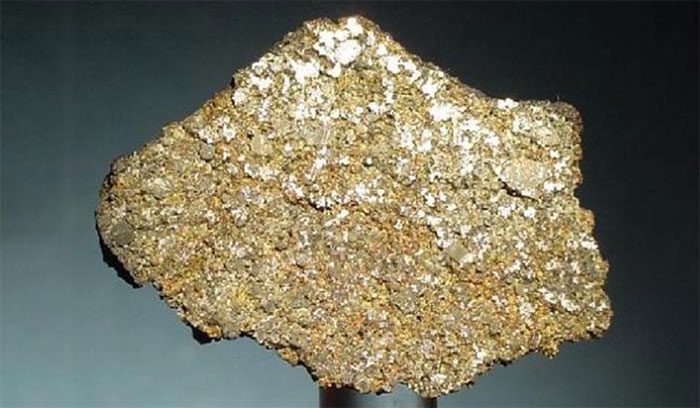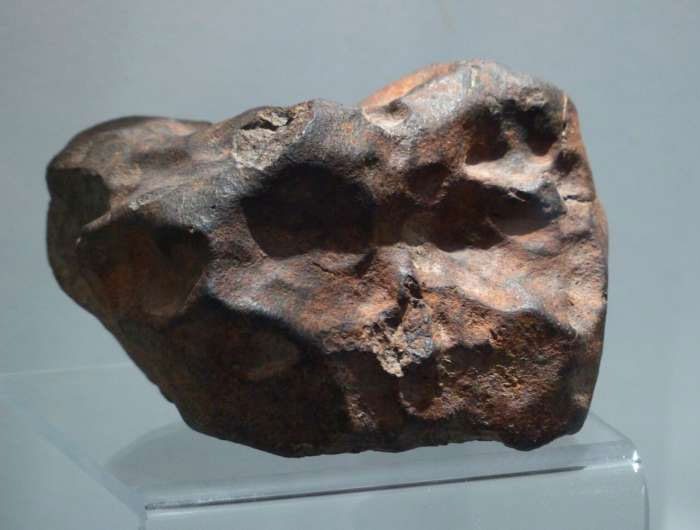Researchers have discovered a promising new method to create high-performance magnets used in wind turbines and electric cars without relying on rare earth elements, which are predominantly supplied by China.
A research team from the University of Cambridge (UK) collaborated with colleagues from Austria to find a new method to potentially replace rare earth magnets. This involves Tetrataenite, a type of “cosmic magnet” that takes millions of years to develop naturally in meteorites.

The new method promises the potential to manufacture high-performance magnets without the need for rare earth elements, a resource for which China accounts for over 80% of the global supply.
Previous attempts to create Tetrataenite in laboratories relied on extreme, impractical methods. However, in this new approach, researchers added a common element, phosphorus, to produce Tetrataenite on a large scale and artificially without any specialized processing methods or expensive techniques.
The research findings were published in the journal Advanced Science. Cambridge Enterprise, the commercialization arm of the University of Cambridge, along with the Austrian Academy of Sciences, has already filed for a patent on this technology.
High-performance magnets are a crucial technology for building a carbon-neutral economy, and the best permanent magnets currently available contain rare earth elements.
Contrary to their name, rare earth elements are abundant in the Earth’s crust. However, China has a near-monopoly on the global production of these materials. In 2017, 81% of rare earth elements worldwide originated from China.
Other countries, such as Australia, also mine rare earth elements, but there are still concerns that the supply could be at risk in the event of rising geopolitical tensions with China.
Professor Lindsay Greer from the Department of Materials Science & Metallurgy at the University of Cambridge stated: “Rare earth mines exist in other places, but they are very difficult to exploit: we have to extract a large amount of material to obtain a small amount of rare earth elements.”
Mr. Greer also noted that in light of the environmental impacts and excessive dependence on China, there has been an urgent search for alternative materials that do not require rare earth elements.
Tetrataenite, an iron-nickel alloy with a uniquely ordered atomic structure, is one of the most promising alternatives. Tetrataenite forms over millions of years as a meteorite cools slowly, allowing the iron and nickel atoms sufficient time to self-organize into a specific chain within the crystal structure, ultimately creating a material with magnetic properties similar to those of rare earth magnets.

Meteorites, where Tetrataenite magnets form over millions of years under natural conditions.
In the 1960s, scientists were able to create artificial Tetrataenite by bombarding iron-nickel alloys with neutrons, allowing the atoms to arrange in the desired order, but this technique was not suitable for mass production.
Now, Greer and his colleagues from the Austrian Academy of Sciences and Montanuniversität in Leoben have found a feasible alternative that does not require millions of years of cooling or neutron irradiation.
The research team examined the mechanical properties of iron-nickel alloys containing a small amount of phosphorus—an element also found in meteorites.
The researchers indicated that phosphorus, present in meteorites, allows the iron and nickel atoms to move more quickly, enabling them to form the necessary ordered mass without waiting millions of years. By mixing iron, nickel, and phosphorus in the right amounts, they could accelerate the formation of Tetrataenite by 11 to 15 orders of magnitude, allowing it to form within seconds in a simple casting process.
Greer remarked: “What’s astonishing is that no special processing is required: we just need to melt the alloy, pour it into a mold, and we have Tetrataenite. The previous viewpoint in this field was that you couldn’t obtain Tetrataenite unless you did something extreme, because otherwise, you’d have to wait millions of years for it to form. This result represents a complete shift in how we think about this material.”
Although researchers have discovered a promising method for producing Tetrataenite, further research is needed to determine whether it is suitable for high-performance magnets. The research team hopes to collaborate with major magnet manufacturers on this issue.


















































